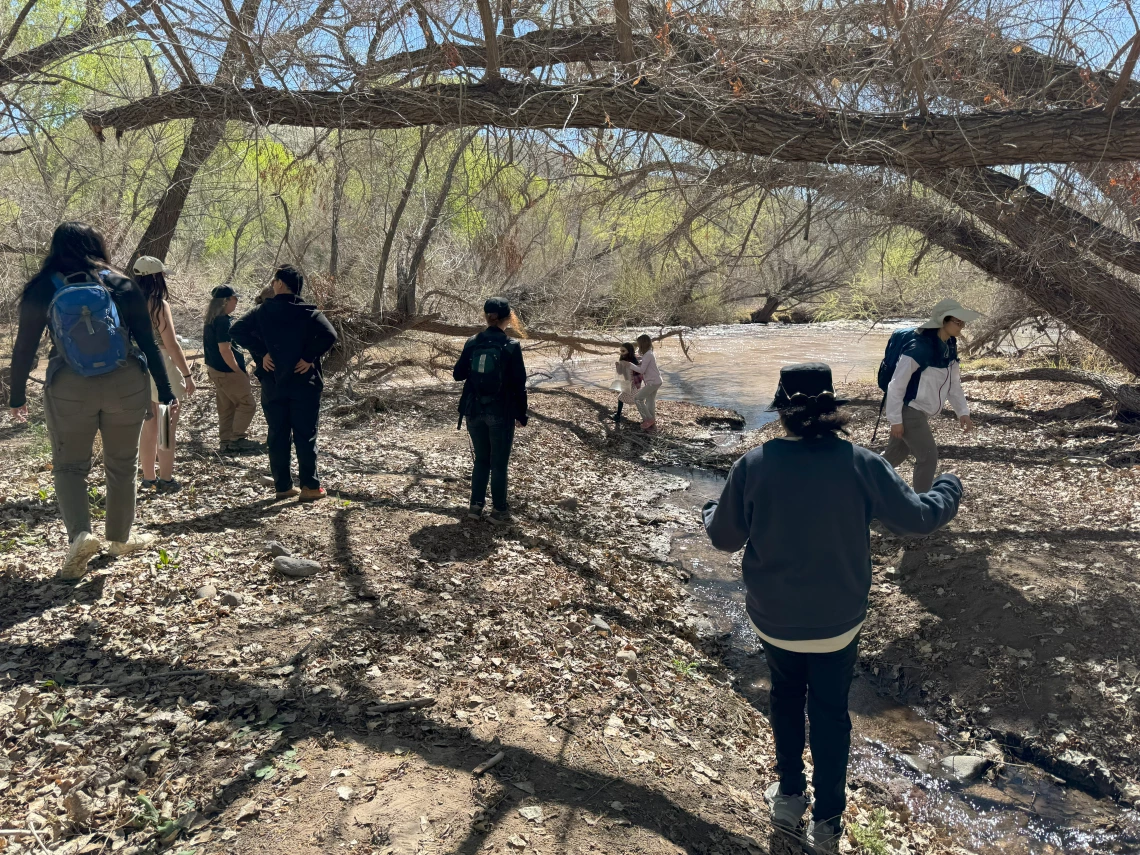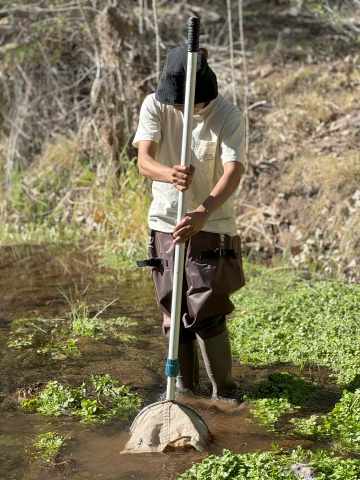Career Field Experience program gives students hands-on training in Environmental Science
Environmental science lessons at the University of Arizona are jumping from the textbook into the real world as faculty develop the Career Field Experience for Environmental Science (CFEES) program.

Students work in a riparian area in Southern Arizona as part of the Career Field Experience for Environmental Science (CFEES).
Ben Yang

A student works with a wildlife net in Gila Box Riparian National Conservation Area in Southern Arizona.
Ben Yang
This semester, Department of Environmental Science students traveled to the Gila Box Riparian National Conservation Area for the second faculty-guided trip within CFEES. During the day, students receive hands-on training in a variety of environmental science research techniques and meet professionals from government agencies, like the Bureau of Land Management and Arizona Game and Fish.
The program was co-developed by assistant research scientist David Walker and assistant professor of practice Katrina Henry to give students a new perspective on learning and career development.
“As a department, we are trying hard to give them the most well-rounded education we can and that doesn’t stop at the classroom,” Walker said. “We are introducing them to a variety of field jobs to prepare them for potential employment, so they get a better idea of what they want sooner rather than later.”
One area of study for this weekend-long trip was learning Rapid Bioassessment Protocols, which is a standard framework for determining a specific area’s ecological health developed by the EPA and used by organizations throughout the country. Students practiced calculating water flow in the Bonita Creek, measuring canopy cover and safely collecting fish with nets to determine biodiversity.
According to students, like Jessica McConnell, the trip gave them an idea of day-to-day job duties within government agency careers while bonding with their peers.
“It was refreshing to engage in real work in the field without it feeling burdensome,” McConnell, an AZOnline student, said. “Witnessing the passion and drive of my fellow students was truly inspiring. Despite the 13-hour drive from CA, I returned home feeling fulfilled and enriched by the experience.”
Since this is only the second outing of the program, Walker and Henry said they are continuously developing it based on feedback from students and their own observations during the weekend.
Some future ideas include bringing students to other types of protected lands, like Wilderness Areas, since they have different regulations and conservation goals. They also want to bring in professionals from other industry areas, specifically non-governmental organizations (NGOs) like the National Audubon Society and the Nature Conservancy, to expose students to other career options.
While the lessons are serious, Walker also said a major goal for the trip is for the students to find enjoyment in learning while camping together.
“There’s a balance between what a student wants and what they need to learn,” Walker said. “If people are learning and having fun at the same time, that is the best combination because it doesn’t feel like learning is a chore.”
